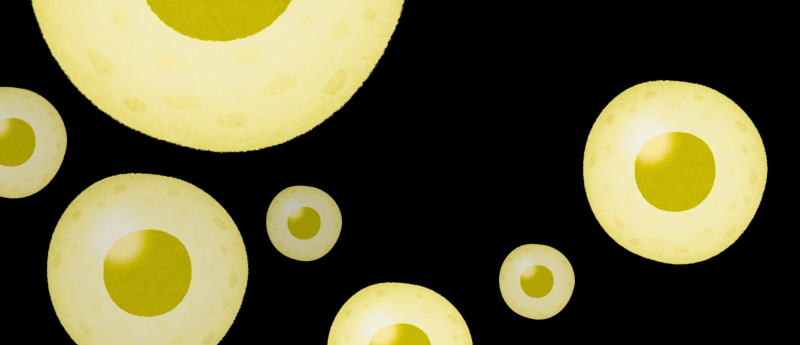Be picky: selecting cells with desirable characteristics for further development

How do you currently identify and select cells for further growth, characterization and processing? Many available cell-selection technologies lack the sensitivity necessary to preserve cell health and proliferative ability, hindering research workflows and development pipelines. The CellCelector from Sartorius (Göttingen, Germany) overcomes this limitation, providing an automated system that can identify cells in your culture that possess desirable characteristics and then select and pick them for future development or downstream processing.
In this interview, we asked Daryl Cole (right) – Scientist in the Bio Applications Team at Sartorius – about the working principle of the CellCelector, its applications and benefits to research outcomes, how it overcomes the limitations of other cell-picking technologies and top tips for using it in the lab.
Please provide a detailed explanation of how the CellCelector works.
The CellCelector is an automated cell identification and picking system. What this means is that the system can automatically identify cells in your culture that possess desirable characteristics and then select and pick them for future development or downstream processing.
The CellCelector system comprises three integrated parts: the picking arm and destination deck, the objective viewing platform, and the software and user interface. Tissue culture plates are placed onto the viewing platform and scanned using the camera system with multiple objectives and fluorescence capabilities. Once scanning is complete, the images generated are analyzed in the software to determine key characteristics such as size, shape and fluorescence. Following analysis, cells that fit the researcher’s criteria are selected from a list of analyzed objects and the system is calibrated for picking.
Prior to picking, calibration of the picking arm must be performed to accurately aspirate the cells that are to be selected, while avoiding damage to the picking tool and the tissue culture vessel. In addition, the characteristics of the picking process must also be determined; for example, the destination vessel to be used, the deposition order within that vessel, the number of cells to be deposited per well, and whether heating or cooling of the destination vessel is required.
Once the above have been completed, the CellCelector can automatically pick the selected cells and record images both before and after picking, while the researcher can focus on other work.
What are its applications?
The CellCelector system can be used for a variety of different research areas, from single-cell cloning and cell-line development (CLD), through to drug discovery and rare-cell isolation. At its core, the CellCelector is a cell-picking system that can be used to pick cells with specific characteristics; however, because of the optical capabilities and the software suite, it can be used for more complex applications as well.
Single-cell cloning is a method of CLD where cell lines are generated from a single source cell. The source cell has usually been modified in some way or is endowed with valuable characteristics, such as robust growth or high yield of a secreted protein such as an antibody. Using CellCelector nanowell arrays, it is possible to miniaturize this process as each macrowell of a 24-well plate, for example, contains approximately 3000 nanowells. Single cells can be seeded into the nanowells and scanned, monitored and characterized by the CellCelector to determine those with the ideal phenotype. These cells can then be picked once they become clones and expanded for further culture into cell lines. This method reduces the resources and time required to develop cell lines compared to a more conventional method such as limiting dilution.
How does this technology overcome the limitations of other instruments?
One of the main benefits of using the CellCelector in this area of research and development is the capability of the system to gently pick very delicate cells and seed them on for further growth or characterization. Traditional methods such as fluorescence-assisted cell sorting (FACS) are notorious for their harsh treatment of cells during selection, compromising cell health and proliferative ability. This is particularly useful for rare and difficult-to-culture cells, such as circulating tumor cells, where it is vital that you select the cell of interest with great care to accurately isolate the cell without damaging it. This allows the cell to be used for further culture, downstream processing or harvesting for characterization, such as genetic screening.
A benefit of nanowell arrays for CLD is in the analysis of cells using in-well assays, such as bead-based fluorescence. Beads with the antigen of interest bound to their surface are added to the nanowells and the antibody secreted by the clones binds to the bead, a fluorescently conjugated secondary antibody binds to the secreted antibody and a fluorescent signal is detected. This kind of assay provides the ability to characterize the yield of a secretable antibody from a cell clone of interest in situ within the nanowell.
How can this technology benefit researchers and research outcomes?
The benefits of using the CellCelector for researchers and research outcomes are numerous. The system provides a level of automation that can streamline researchers’ workflows, making processes simpler and more reliable. Automation is applied to both the process of picking cells and objects, and the analysis and identification of those same cells and objects. This means that even inexperienced biologists can take advantage of the CellCelector’s capabilities to identify and pick cells for their experiments.
The fine accuracy and delicacy of the CellCelector platform allows researchers to investigate and develop assays that would not be possible either through conventional manual means or alternative cell-isolation systems. An example is the nanowell screening assay I described earlier, which allows scientists to screen thousands of clones to determine yield, outgrowth and robustness within a single macrowell of a 24-well plate S200 nanowell. This hugely outstrips conventional methods for CLD and drug discovery, meaning that more discoveries can be made in less time, using fewer resources.
Further, the accuracy and reliability I have already mentioned apply to other fields of research such as 3D tissue models and rare-cell-type isolation. Development of 3D tissue models that more accurately recapitulate the in vivo environment are highly valued as they are more representative for testing drug efficacy and side effects than traditional 2D culture or animal models. The CellCelector provides greater utility for these models facilitating their characterization and specific selection more effectively than manual methods.
Do you have any tips for using the CellCelector?
My first tip for using the CellCelector would be to keep an open mind. What do I mean by that? Well, a lot of users may decide to use the CellCelector for one type of experiment, and that’s fine, but it is good to be aware of the power of the system and the capabilities inherent in its design. So, if there are other applications that you may perform in your lab, it might be worth thinking of how the CellCelector might benefit those applications, too.
Tip two would be to always make a note of which single-cell picking capillary you have installed during your experiment; I often add it as a comment in the experiment I am running. This helps to keep a note for future reference and also ensures you are aware of the specific capabilities of the installed capillary.
Another tip would be to make sure you push the plate that you are viewing to the top right corner of the stage before closing the plate holder. This ensures that the plates you use are always securely fixed and won’t move during the scanning process.
Finally, tip number four would be to make sure that you are aware of the stage speed you are using and how that affects the cell type of choice. For example, if you are looking at suspension or very loosely attached cell types, it is better to reduce the stage speed to avoid as much as possible any motion during scanning.
About Daryl
Daryl Cole earned a PhD in molecular oncology from King’s College London (UK) in 2008 and joined Sartorius in 2021 as a Scientist in the Bio Applications Team, working with the Incucyte, Octet, iQue and CellCelector – but focusing on CellCelector applications development. He has over 15 years of experience in a range of scientific fields, from cancer research to organoid and stem-cell development.
The opinions expressed in this interview are those of the interviewee and do not necessarily reflect the views of BioTechniques or Taylor & Francis Group.
This interview was supported by Sartorius.
